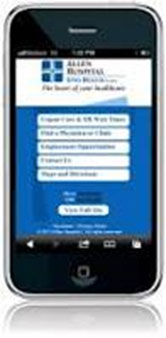 If you’re in the healthcare marketing world, I’ll wager you’ve heard this stat a multitude of times via a plenitude of forums: 72% of Internet users say they looked online for health information in the past year.* It stands to reason that they’d also value easy viewing of hospital websites from their mobile phone. We checked with our Brogan Talks to Women online survey panel to verify this hunch and found that ¾ of our 105 respondents felt it was at least somewhat, if not very, important for a hospital to have a mobile-friendly (responsive) website.
If you’re in the healthcare marketing world, I’ll wager you’ve heard this stat a multitude of times via a plenitude of forums: 72% of Internet users say they looked online for health information in the past year.* It stands to reason that they’d also value easy viewing of hospital websites from their mobile phone. We checked with our Brogan Talks to Women online survey panel to verify this hunch and found that ¾ of our 105 respondents felt it was at least somewhat, if not very, important for a hospital to have a mobile-friendly (responsive) website.
While we were at it, we asked a few other questions (couldn’t help ourselves) which revealed some information worth sharing. The highest rated selection factor for choosing a hospital among our panel was not a doctor referral, but expertise in a specific illness, followed by reputation. This warrants hospitals communicating with the female healthcare decisionmaker about those clinical areas of expertise that set them apart, under a consistent brand umbrella. We know that healthcare consumerism means women (mostly Gen X and Millenials) are online learning about specific programs, physicians, ratings, outcomes, etc. to determine where they and their family members should obtain healthcare for specific illnesses.
When queried about the specific area of orthopedics, our panel says they want “highly-trained, board certified orthopedists” above all else. A “comprehensive center with a range of services” would be to their liking as well. They’d most appreciate finding information on the website about the orthopedists and procedures, noting that patient testimonials and physician videos about the orthopedic care would be of value. This is not surprising since mobile video viewing is predicted to reach 50% of all online viewing by 2016.*
Our panel gives us an informal, topline pulse on how women are thinking and behaving. These healthcare snippets fuel further strategizing and querying with our clients. Did you find any of our panel results helpful or surprising?
*Pew Research Center’s Internet & American Life Project, 2013























